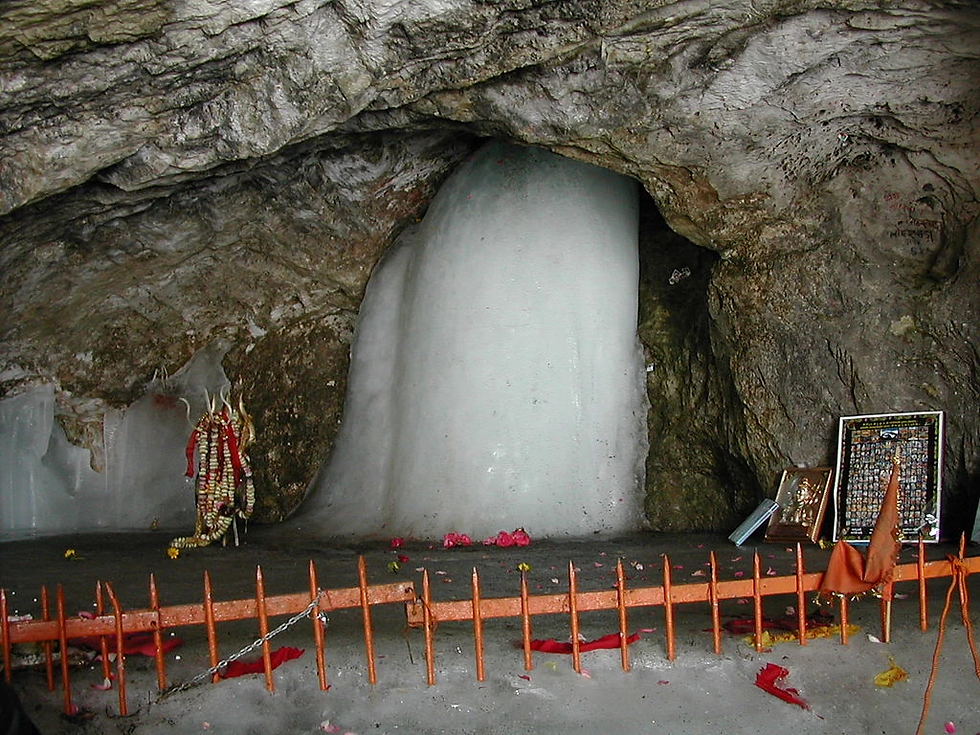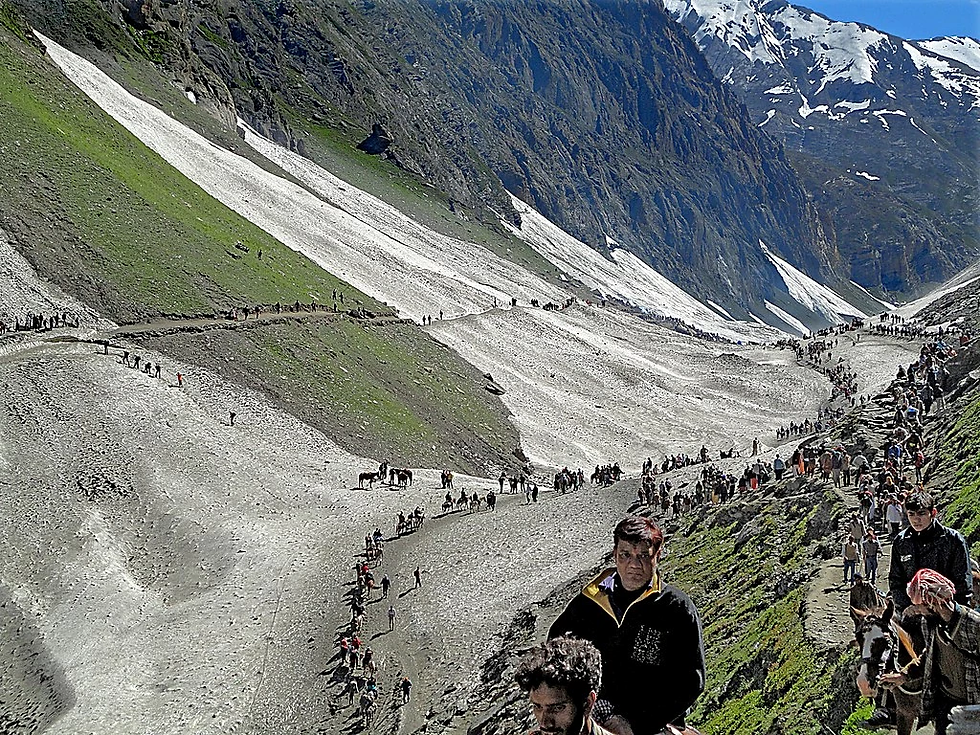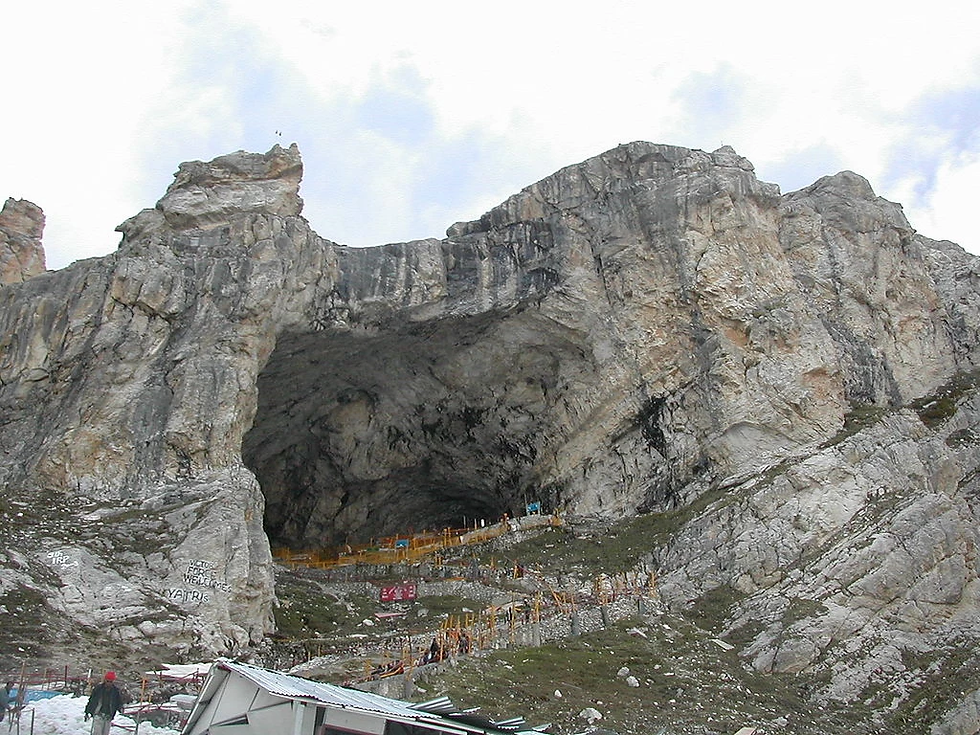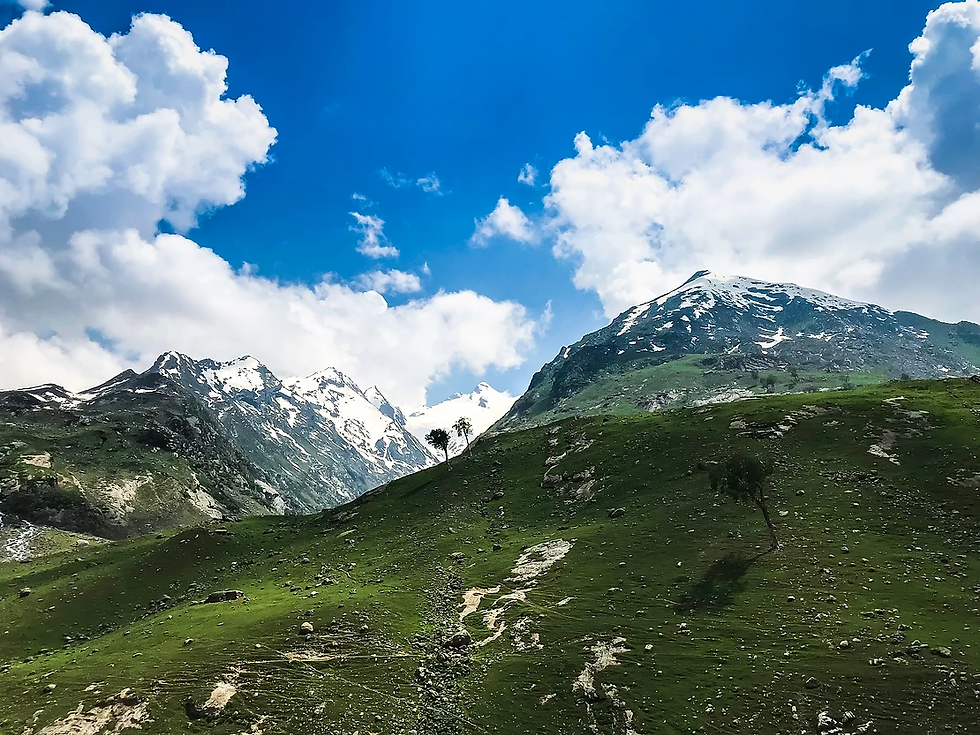Shri Amarnath |Jammu and Kashmir
- Team Himalayan Journal

- Aug 10, 2020
- 3 min read
Updated: Sep 6, 2020
Amarnath is a major pilgrimage centre for Hindus. It is located 141 km north-east of Srinagar city of Jammu and Kashmir state at an elevation of 3,888 meters (12756 ft) above sea level. The length (depth inward) of this cave is 19 meters and the width is 16 meters.

This cave is spread over an area of about 150 feet and the cave is 11 meters high and can contain thousands of devotees. The amazing splendour of nature is the Amarnath cave, one of the major shrines of Lord Shiva.
Mythology
According to a mythological legend, Lord Shiva chose this cave to tell Parvati the secret of immortality (secrets of life and death). Mrityunjaya Shiva who conquers death is immortal, hence also called ‘Amareshwar’. The common people call 'Amareshwar' as Amarnath.
भूखे को अन प्यासे को पानी ॥
तू है बड़ा दानी
जय जय बाबा अमरनाथ बर्फानी ॥
History of Amarnath Yatra
Historians have different views about the origin of the Amarnath Yatra. Some people believe that it has been going on since historical times with disruption, while others say that it began in the 18th and 19th centuries after the discovery of the sacred cave by Malikas or Muslim shepherds.

Even today a fourth offering is made to the descendants of that Muslim shepherd. Historians believe that the Amarnath Yatra has existed for thousands of years. And the importance of Baba Amarnath Darshan is also found in the Puranas.
According to the Puranas, Kashi has ten times of Linga and worship, ten times from Prayag and thousands of times from Naimisharanya, who has the virtue of Shri Amarnath.
It is equally mentioned in Bringesh Sahinta, Neelmat Purana, Kalhan's Rajatarangini, etc. "Refer to some important places in Bringesha Code where pilgrims were going to Shri Amarnath cave had to perform religious rituals".

They include Anantnya (Anantnag), March Bhawan (Mattan), Ganesbal(Ganeshpur) Mamleshwar (cases), Chandanwari (2,811 meters), Susramangr (Sheshnag) 3454 meters, Panctrngini (Panchtarni) 3845 meters and Amravati.
Kalhan's 'Rajatarangini Tarang II' contains a narrative of the ruler of Kashmir, Samadimat (34 BC-17th AD). He was a great devotee of Shiva who worshipped the snow lingam in the forests. The Shivling of ice is not found anywhere in the world except Kashmir.
One of the great rulers of Kashmir was 'Jainabuddin' (1420-70 AD), whom the Kashmiris affectionately called the Emperor, had visited the Amarnath cave. Historian Jonraj has mentioned about this. Akbar's historian Abul Fazl (16th century) mentions in Aina-i-Akbari that Amarnath is a sacred pilgrimage site. A bubble of ice is formed in the cave. Which increases little by little every day for 15 days and rises more than two yards.

Amarnath Yatra: Image by Harsh Chauhan
Kalhan has also mentioned that Sushram Nag (Sheshnag) is seen to the pilgrims coming to Areshwara (Amarnath) to this day. The mention given about Amareshwara in the Neelmat Purana suggests that this pilgrimage was also known in the sixth-seventh centuries.
Along with the decrease of the moon, it also starts to happen and when the moon disappears, the Shivling also disappears.
Historians who supported the yatra of the Amarnath pilgrims say that the yatra was interrupted for a period of about three hundred years from the middle of the 14th century on account of foreign invasions on the Kashmir Valley and the unrest created by the Hindus migrating from there.
Some historians say that the cave was rediscovered in the summer of 1869, and the first formal pilgrimage to the sacred cave was held three years later in 1872. Malik was also in this pilgrimage.
A concept by Walking The Himalayas




Comments